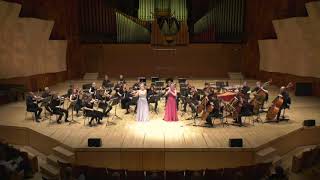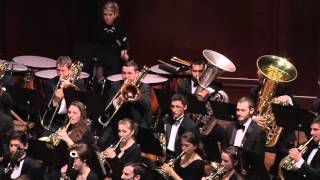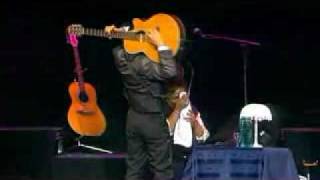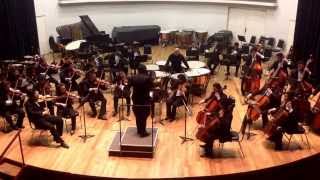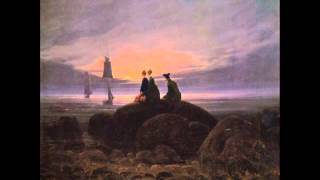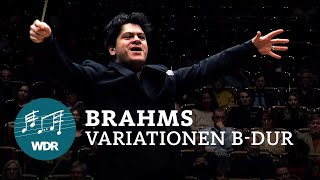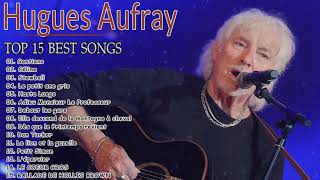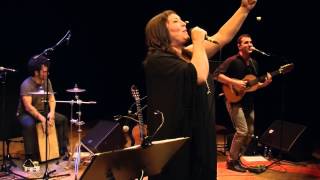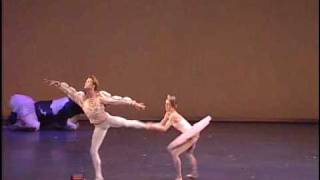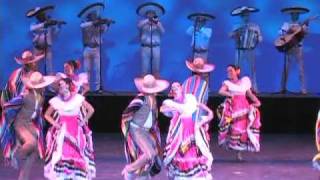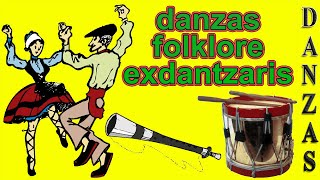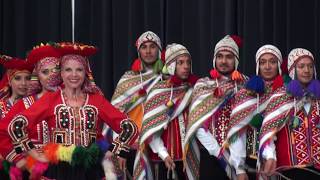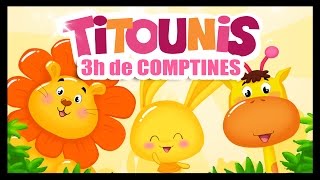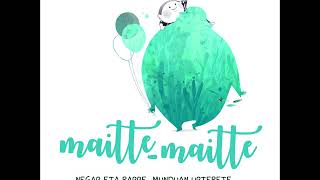Recommended music videos for initiation to classical music
Franz Joseph Haydn (1732-1809), Austrian composer whose brother Michael Haydn was also a notable composer, was one of the main pillars on which classicism was based (1750-1810). At the age of six he began his studies of harpsichord and violin. At the age of eight he was admitted as a chorister at St. Stephen's Cathedral in Vienna where he continued his musical studies. After losing his voice, he had to survive by working various jobs, while studying composition by analyzing the works of Carl Philipp Emanuel Bach . He maintained a close friendship with Mozart and was Beethoven 's teacher. He laid the main foundations of the sonata form and the formal structure of the string quartet and the symphony . He died at the age of 77 in Vienna .
The catalogue of Haydn's works . The works of Joseph Haydn are now classified according to the system devised by Anthony van Hoboken. Each work is identified by a Roman numeral corresponding to the category, which in most cases is identified by a genre. Some categories have subdivisions, which are indicated by a lower-case letter followed by an Arabic numeral corresponding to the order of the particular work within the category. These numerals are preceded by the word Hoboken (in memory of the author of the catalogue) and sometimes by Hob (his abbreviation).
The Concerto is a musical form written for one or more solo instruments accompanied by an instrumental ensemble. It was Vivaldi who established the fundamental bases of its structure with three movements ( I fast-II slow-III fast ) and presented as a dialogue between the soloists and the instrumental ensemble. From classicism onwards (1750-1810), especially from the bases created by CPE Bach , the first movement is built following the patterns of the sonata form (exposition, development and reexposition) , while the second and third movements adopt free and punctual forms. Frequently, at the end of the first and/or third movements, the soloists have a cadenza without orchestral accompaniment with which to show off their virtuosity.
Today we offer the First Movement of the Concerto for flute and oboe, Hob. VIIh/1, performed by the Danish sisters Maria Steinaa and Eva Steinaa. The cadenza appears towards the end (3'39'') of this movement.
Alfredo Kraus (1927-1999) was a Spanish tenor and singing teacher, considered one of the best light lyric tenors of the second half of the 20th century . His best-known role was Werther , from the opera of the same name by Jules Massenet . The son of a Spanish mother and an Austrian father, Kraus began his musical studies with piano lessons at the age of four, and singing in the choir of the Corazón de María parish at the age of eight. He made his international debut at the Teatro Real in Cairo in 1956 with the role of the Duke of Mantua in Verdi 's opera Rigoletto ; he was also a prominent performer of zarzuela. He received the Canarias Prize for Fine Arts and Interpretation in 1985, and the Prince of Asturias Award for the Arts in 1991. The Bilbao City Council named a square in the Rekalde neighborhood after him.
The Neapolitan song is a composition generally in the Neapolitan language for solo male voice and instrumental accompaniment, characteristic of the city of Naples and its region. Its lyrics refer to love affairs or the landscape of Southern Italy . Some of the most famous songs are O sole mio, Torna a Surriento, Funiculì funiculà or Santa Lucia . The international popularity of Neapolitan songs was due, in part, to Italian emigration to the rest of Europe and America between 1880 and 1920. It also contributed to the interest of opera performers such as Enrico Caruso , who used these songs to perform them as an encore in his performances at the Metropolitan Opera House in New York and to record them on disc.
Today we can attend a collection of Neapolitan songs by different Italian authors offered by Kraus , in which we can enjoy her delicate voice and brilliant technique.
Leonard Bernstein (1918 – 1990) was an American composer, pianist, and conductor. He was the first American -born conductor to achieve worldwide fame, best known for his direction of the New York Philharmonic Orchestra , his television Concerts for Young People from 1958 to 1972, and his many compositions, including West Side Story (1957) and Candide . He was also a pivotal figure in the modern revival of the music of Gustav Mahler , the composer he most passionately cared about. As a composer, he wrote piano music, chamber music, choral music, church music, numerous stage works for ballet, film, opera, and musicals, as well as numerous orchestral works.
Candide is a comic operetta composed by Leonard Bernstein in 1956, based on the novel of the same name by Voltaire . The operetta was first performed in 1956 with a libretto by Lillian Hellman . The text has been used in numerous versions, but since 1974 it has only been performed with the libretto by Hugh Wheeler , which is more faithful to Voltaire 's novel.
Today the UMich Symphony Band conducted by maestro Michael Haithcock offers us the overture of this operetta in a version for Brass Band.
Cesária Évora (1941–2011) was a Cape Verdean singer known by the nicknames "the Queen of Morna" or "The Barefoot Diva" due to her habit of performing barefoot on stage in solidarity with the homeless and poor women and children of her country. Cesária Évora 's Cape Verdean blues in general speaks of the country's long and bitter history of isolation and the slave trade, as well as emigration, as the number of Cape Verdeans living abroad is said to be greater than the country's total population. In 2004 she won the Grammy Award for Best Contemporary World Music Album for Voice of Love . In 2007 she was awarded the Legion of Honour by French President Jacques Chirac .
Recommended classical music videos
Georg Druschetzky (1745 – 1819), was a Bohemian composer, oboist and timpanist. He studied oboe with the celebrated oboist and composer Carlo Besozzi in Dresden . He then entered the band of an infantry regiment. In 1777 he was certified as a drum player. He began writing music for his band in the 1770s. He also composed chamber music and orchestral music, including 27 symphonies and concertos for various instruments. The scores of two of his operas have survived; but a suite of incidental music and a ballet are lost. Druschetzky was one of the first composers to use the BACH motif.
Partita (also partie, partia, parthia or parthie ) was originally the name of a single-instrument piece of music ( 16th and 17th centuries ), but Johann Kuhnau , his pupil Christoph Graupner , Johann Sebastian Bach and other composers used it for collections of musical pieces, as a synonym for suite .
Felix Mendelssohn (1809-1847) was a German pianist, conductor and composer of outstanding technical and formal perfection. He was a child prodigy who demonstrated his extraordinary abilities at a very early age and the brother of the pianist and composer Fanny Mendelssohn , also a child prodigy. He began taking piano lessons from his mother; at the age of eighteen he began composition classes based on Bach 's Well-Tempered Clavier . Thus, Mendelssohn 's works show a well-established tonal clarity and a profound mastery of counterpoint. His legacy includes piano music, organ music, chamber music, overtures, symphonies, concertos, oratorios and incidental music.
Catalogue of Mendelssohn's works . His works are classified by their Opus number (from Latin opus 'work'; op. abbreviation) which is a term used in music to catalogue the works of most composers since the 17th century .
Songs Without Words (German: Lieder ohne Worte ), also known as Romances Without Words , is a series of short lyrical songs for piano by the Romantic composer Felix Mendelssohn , written between 1829 and 1845. The set consists of eight volumes of Songs Without Words , each consisting of six songs (lieder), which were written at various times in Mendelssohn 's life and published separately. The piano became increasingly popular in Europe in the early 19th century , when it became a standard item in many middle-class homes. The pieces are within the reach of pianists of various abilities and this contributed to their popularity, which has caused many critics to underestimate their musical value. Here are their titles:
BOOK 1, OP. 19B (1829-1830)
No. 1 (0:00) in E major .-. No. 2 (4:38) in A minor.-. No. 3 (6:50) in A major .-. No. 4 (9:16) in A major .-. No. 5 (11:32) in F-sharp minor .-. No. 6 (14:14) in G minor.
BOOK 2, OP. 30 (1833-1834)
No. 1 (16:49) in E-flat major .-. No. 2 (21:32) in B-flat minor .-. No. 3 (23:48) in E major .-. No. 4 (26:01) in B minor .-. No. 5 (28:56) in D major .-. No. 6 (31:20) in F-sharp minor.
BOOK 3, OP. 38 (1836-1837)
No. 1 (35:05) in E-flat major .-. No. 2 (37:06) in C minor .-. No. 3 (38:51) in E major .-. No. 4 (41:05) in A major .-. No. 5 (43:27) in A minor .-. No. 6 (45:54) in A-flat major
BOOK 4, OP. 53 (1839-1841)
No. 1 (50:07) in A-flat major .-. No. 2 (53:46) in E-flat major .-. No. 3 (55:53) in G minor .-. No. 4 (58:40) in F major .-. No. 5 (1h 01:40) in A minor .-. No. 6 (1h 04:40) in A major
BOOK 5, OP. 62 (1842-1844)
No. 1 (1h 07:21) in G major .-. No. 2 (1h 10:24) in B-flat major .-. No. 3 (1h 12:21) in E minor .-. No. 4 (1h 16:11) in G major .-. No. 5 (1h 17:37) in A minor .-. No. 6 (1h 20:56) in A major
BOOK 6, OP. 67 (1843-1845)
No. 1 (1h 23:14) in E-flat major .-. No. 2 (1h 26:17) in F-sharp minor .-. No. 3 (1h 28:36) in B-flat major .-. No. 4 (1h 31:10) in C major .-. No. 5 (1h 33:05) in B minor .-. No. 6 (1h 35:06) in E major
Book 7, Op. 85 (1834-1845)
No. 1 (1h 37:19) in F major .-. No. 2 (1h 40:10) in A minor .-. No. 3 (1h 41:07) in E-flat major .-. No. 4 (1h 43:31) in D major .-. No. 5 (1h 47:14) in A major .-. No. 6 (1h 49:15) in B-flat major
BOOK 8, OP. 102 (1842-1845)
No. 1 (1h 51:35) in E minor .-. No. 2 (1h 54:32) in D major .-. No. 3 (1h 56:46) in C major .-. No. 4 (1h 58:17) in G minor .-. No. 5 (2h 0:30) in A major .-. No. 6 (2h 1:38) in C major.
Today the Greek pianist Rena Kyriakou (1917-1994) offers us this valuable legacy of the complete collection of the work.
Johannes Brahms (1833-1897), born in Vienna , where he spent most of his life, was the most conservative composer of the Romantic movement, as opposed to the progressive movement led by Liszt and Wagner . His music is firmly rooted in the structures and composition techniques of the classical masters, and its formal structures faithfully follow the patterns of Classicism , although he uses some of the colour of Romanticism and popular music. Eminently perfectionist in character, he wrote for piano, chamber ensembles, symphony orchestra, for solo voices and for choir. It was Hans von Bulow who proposed the term "the three Bs", referring to Bach , Beethoven and Brahms as the three main pillars of the history of music.
Variation is a formal technique where material is repeated in an altered form. The changes may affect melody, rhythm, harmony, counterpoint, timbre, orchestration, or any combination thereof. As a composition, it is characterized by a main theme that is imitated in other, related subthemes or variations.
Variations on a Theme by Joseph Haydn (B-D ) is a musical work in the form of a theme and variations composed by Johannes Brahms in 1873. Brahms composed two versions of the work: one for two pianos and one for symphony orchestra, which we offer today. THEME (0´02´´) Choral St. Antoni. Andante .-. VARIATION I (2´03´´) A little more lively .-. VARIATION II (3´28´´) More vivace .-. VARIATION III (4´31´´) Con moto .-. VARIATION IV (6´22´´) Andante con moto .-. VARIATION V (8´37´´) Vivace .-. VARIATION VI (9´37´´) Vivace .-. VARIATION VII (10´58´´) Funny .-. VARIATION VIII (13´49´´) Presto non troppo .-. FINALE (14´55´´) Andante.
The work is currently performed by the WDR Symphony Orchestra under the baton of its principal conductor, the Romanian maestro Cristian Măcelaru (1980).
Witold Lutosławski (1913–1994) was one of the most important European composers of the 20th century . He is arguably the most important Polish composer after Chopin , and was his country's most eminent musician in the last three decades of the century. During his lifetime he won a large number of international awards, including being made a knight of the Order of the White Eagle , Poland 's highest honour. He studied piano and composition in Warsaw , and his early works were markedly influenced by Polish folk music. From the late 1950s he incorporated his own compositional methods with harmonies of small groups of musical intervals and the use of aleatory processes, in which the rhythmic coordination of the various parts is subject to chance.
Symphony No. 3. Written by Witold Lutosławski between 1973–1983, it is dedicated to the Chicago Symphony Orchestra and Georg Solti who premiered it on 29 September 1983. Many of its passages employ Lutosławski 's then well-developed technique he called "limited aleatory", in which each of the orchestra's players is asked to play his or her repeated phrase or fragment in his or her own time, rhythmically independent of the other musicians; although there are other parts that demand rhythmic synchronisation by the orchestra.
Today we attended the performance offered by the Finnish Radio TV Symphony Orchestra conducted by the Finnish maestro Hannu Lintu (1967).
Recommended music videos for all tastes
Lena Horne (1917-2010) was an American actress and singer of jazz and popular music. Her career spanned more than sixty years, from the 1930s to the 1990s. She made her debut as a chorus girl at the age of 14, and went on to join the ranks of the famous Cotton Club in Harlem , where Duke Ellington, Billie Holiday, Louis Armstrong, Ethel Waters and other famous artists performed. She also performed on Broadway , earning a Tony nomination in 1957 for her role in Jamaica . She worked regularly in radio and television: on the Judy Garland , Bing Crosby and Frank Sinatra shows, and on The Muppet Show . She has two stars on the Hollywood Walk of Fame , as an actress and as a singer, and has received three Grammy Awards, including a Lifetime Achievement Award in 1989.
Hugues Aufray ( Neuilly-sur-Seine , France; 18 August 1929) is a French author, composer and singer. In 1945 he lived in Madrid for three years and for this reason he began his career singing in Spanish. He finished fourth in the 1964 Eurovision Song Contest in which he represented Luxembourg . During the yeyé era he triumphed with songs adapted from folk music, while in the 1960s part of his repertoire came from songs by Bob Dylan . His most famous songs are: Santiano, Céline, Stewball ... and in Spanish Barco de Papel . In 2022, he received a special award celebrating his musical and artistic career, during the 63rd International Congress of the Société des Poètes et Artistes de France (Spaf) which took place that year in Sorèze (Tarn - Occitania).
Uxía ( Sanguiñeda, Mos , 19 November 1962) is a Galician singer who began singing at a very young age. Her career officially began in 1985, when she won first prize at the Bergantiños Festival . In 1986, at just twenty-four years old, she published her first album, Foliada de Marzo , with music quite close to traditional music. She represented Galician Television in 1991 at a regional television festival held in Nuremberg and Galicia at Expo 98 in Lisbon and at Liet International , the most important music festival for minority languages, held in Ljouwert in 2004, where the Mosense came third. In 2017 she was awarded the Rebulir da Cultura Galega Award, in recognition of her personal and professional career in the dissemination and promotion of Galician music.
Sonu Nigam (Faridabad, Haryana, India, July 30, 1973) is an Indian musician and singer who sings mainly in Hindi and Kannada but also in other languages such as Urdu, Oriya, Tamil, Assamese, Punjabi or Bengali. He has sung in many of Shahrukh Khan 's Bollywood films, has released many Indian pop albums and has also participated as an actor in several films. His early years in Bombay were not easy until the song " Accha Sila Diya " brought him definitive recognition in his career. During the last few years he has performed many concerts in various countries in America, Europe, Asia and Oceania and has received many and diverse awards. In addition, Sonu contributes intensively to various charities in India and abroad.
Recommended peculiar videos
Gioachino Rossini (1792-1868) was an Italian composer of 39 operas, songs, piano works and some sacred music. In 1812 he was hired by La Scala in Milan ; the following year he premiered his first serious opera, Tancredi , in Venice . Shortly afterwards he premiered another great success, The Italian Girl in Algiers. In 1815 he settled in Naples where he wrote regularly and without stress, with rehearsals and scheduled dates. In 1822 he moved to Vienna where he met the admired Beethoven . From Vienna to London , back to Paris and after the premiere of his last opera, William Tell , he gave up opera at the height of his economic and popularity at the age of 37.
Today we offer this Pas de deux, with its touch of humor, created by Christian Spuck with the music of Rossini 's Gazza ladra Overture , and starring Elisa Badenes and Roberto Bolle .
Mexican folk dance is a representation of Mexican folklore; it reflects rituals, culture and traditions. Even before the arrival of the Spanish, ritual dance was an important part of daily life for the people who inhabited Mexico . The religious people who evangelized these lands tried to suppress them; but, in view of how risky they were, they adapted or Christianized them, thus giving them new meanings. Nowadays, folk dance serves to express feelings, emotions and experiences of the course of life and to revive ancient traditions and rites; it also serves to celebrate important occasions for towns, colonies, families and cities in our country.
Today, in the interpretation of the Jalisco Folkloric Ballet we offer two of these dances: El Gusto (0´5´´) and El Huizache (2´35´´).
The Baile de la Era , also known as the Larrain dance, is a social and square dance that has many similarities with the soka dantza . It is typical of Nafarroa/Navarra , rooted in the central area of its territory and especially in the town of Lizarra/Estella . Some hypotheses say that it is a derivation of the soka dantza , although with all the ceremonial part reduced and with Mediterranean influence. The hierarchy, although very mitigated, is maintained in many cases, as in the Estella version where it is the stewards who begin the dance. The bagpipe (or dulzaina) has always been the instrument with which the dance has been played.
La Valicha is based on a song written in 1945 by Miguel Ángel Hurtado Delgado , which deals with a love affair with Valeriana Huillca ( Valicha is the Quechua abbreviation of the Spanish name Valentina) ; it is the most traditional and popular huayno (Andean dance) of Cuzco and has come to be considered by the people of Cuzco as an anthem of this city. The inspiration for its composition comes from Miguel Ángel Hurtado 's love experience with Valeriana Huillca Condori ; as a dance, it shows one of the ways of dancing, feeling and spreading mountain music through a choreographic game of community participation. The celebration, characterized by the color of its typical costumes, is danced during popular festivals and at social gatherings; it is performed in couples, generally of young people, and has an erotic and festive rhythm linked to the rite of love.
Recommended music videos for children
Various Wikipedia articles have been used to write these texts.
The texts of Videomusicalis are written in Basque, Spanish and English.





